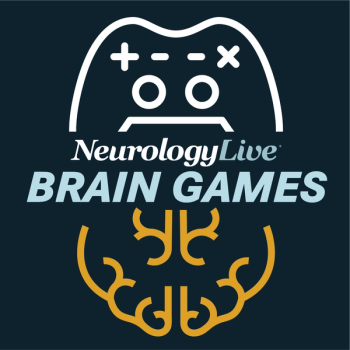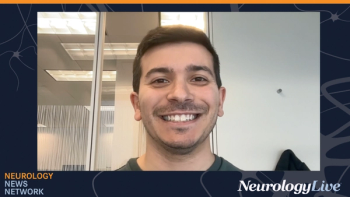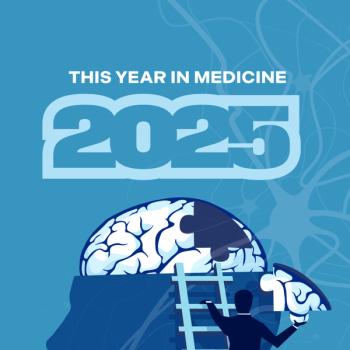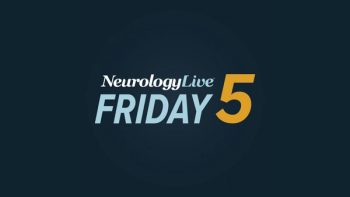
Long-Term Extension Highlights Sustained Therapeutic Benefits of Fenfluramine
Key Takeaways
- Fenfluramine showed a 66.8% median reduction in monthly convulsive seizure frequency, with better outcomes in patients under 6 years old.
- Quality of life improvements were observed, including energy, language, and general health, with significant increases in seizure-free days.
Over long-term treatment, fenfluramine significantly reduced seizure frequency, increased seizure-free days, and improved quality of life in patients with Dravet syndrome.
Recently published findings from an open-label extension (OLE; NCT02823145) study highlighted the therapeutic benefits and safety profile of fenfluramine (Fintepla; UCB) in patients with Dravet syndrome (DS) over a 3.5-year period. Overall, the antiseizure medication was well tolerated and associated with durable and clinically meaningful reductions in monthly convulsive seizure frequency (MCSF).1,2
Published in Epilepsia, the analysis comprised 374 patients with DS who participated in 1 of 3 previously conducted randomized controlled trials (RCTs). After completing at least 1 year in the OLE, 225 patients (60%) rolled over into another OLE study (Study 1900) and 13 (3.5%) switched to commercially available product. Overall, the mean age at enrollment was 10.3 years, median treatment duration was 824 days (range, 7-1280), and 45 patients were at least 18 years of age at OLE enrollment.
In terms of effectiveness, the study reported a –66.8% median percentage change in MCSF from day 1 to end of study (EOS; P <.001), with reductions slightly better among patients aged less than 6 (n = 85; –74.2%) than those 6 and above (n = 239; –62.9%). Overall, the median percent change in generalized tonic clonic seizures (GTCS) and focal-to-bilateral tonic-clonic seizures from baseline during the OLE was –70.2% (P <.0001).
"Anti-seizure medications that provide long-term tolerability and effectiveness are needed for patients with DS, who often have many other medical conditions that are adversely impacted by seizure frequency and severity," Ingrid E. Scheffer, MBBS, PhD, chair of pediatric neurology at the University of Melbourne, said in a statement. "This analysis, showing that FINTEPLA was generally well tolerated over the long-term and increased seizure-free days, builds on previous findings from randomized, controlled trials in adults and children with DS and provides additional evidence of the sustained tolerability and efficacy of this treatment."
In the modified intent-to-treat (mITT) population (n = 324), patients experienced a median 42.5-day longest seizure-free interval, with a 20.3% median increase in convulsive seizure-free days to 24.5 per 28 days from month 1 to EOS (P <.0001). At the last visit, investigators observed significant improvements in several Quality of Life CE subscales, including energy/fatigue (P = .001), language (P = .019), general health (P = .002), quality of life (P = .012), and overall quality of life (P = .033).
READ MORE:
In terms of safety, treatment emergent adverse events (TEAEs) occurring in more than 10% of one age group included gastroenteritis (<6 years: 18.5%; ≥6 years: 6%), rhinitis (14.1%; 6.7%), viral infection (15.2%; 5.3%), cough (15.2%; 7.1%), hypoglycemia (12%; 7.4%), and viral upper respiratory tract infection (10.9%; 3.5%). Discontinuations due to TEAEs were low, with the only reasons being decreased appetite (n = 3; 0.8%), abnormal behavior (n = 3; 0.8%), and seizure (n = 2; 0.5%).
Serious TEAEs, observed in 26.5% of the cohort, were mainly attributed to seizure (5.6%), status epilepticus (4.0%), and pneumonia (3.2%). Three patients died during the study due to sudden death in epilepsy, although it was determined these instances were unrelated to fenfluramine treatment. Notably, of the TEAEs, 26.7% reported decreased appetite, which was ongoing in 9.4% (n = 35) of patients by EOS.
"The ability to meaningfully address the complexities of Dravet, inclusive of the severe and often debilitating seizures, is critical for patients living with this rare syndrome and those who care for them," Brad Chapman, head of U.S. epilepsy and rare syndromes at UCB, said in a statement.1 "The publication of these new long-term findings, in which patients were exposed to FINTEPLA for up to 3.5 years and experienced durable and clinically meaningful reductions in seizure frequency, emphasizes the benefit of this treatment and our commitment to helping improve outcomes for patients with DS and other rare epilepsies.”
Fenfluramine was originally FDA-approved as a therapy for DS in patients aged 2 years and older in 2020, and later for the treatment of Lennox-Gastaut syndrome in March 2022. In early 2023, the
In the latest published research, investigators also conducted a post-hoc analysis testing fenfluramine’s impact in patients using concomitant stiripentol (STP), another approved medication for DS. Among the 75 patients taking both medications, the median percent change in MCSF at EOS was –36.2%. In comparison, this change was much larger for those not taking concomitant STP (–71.6%; P <.0001). Seizure free days were increased by 6.6% for those on STP vs 23.6% for those not on STP (P <.0001).2
REFERENCES
1. Epilepsia Publishes Final Analysis of Open-Label Extension Study of Long-Term Safety and Effectiveness of FINTEPLA® (fenfluramine) in Children and Adults with Dravet Syndrome. News release. March 12, 2025. Accessed May 8, 2025. https://www.ucb-usa.com/stories-media/UCB-U-S-News/detail/article/epilepsia-publishes-final-analysis-open-label-extension
2. Scheffer IE, Nabbout R, Lagae L, et al. Long-term safety and effectiveness of fenfluramine in children and adults with Dravet syndrome. Epilepsia. Published online March 12, 2025. doi:10.1111/epi.18342
3. UCB announces Fintepla (fenfluramine) oral solution is now descheduled and is no longer listed as a controlled substance. News release. April 17, 2023. Accessed May 8, 2025. https://www.prnewswire.com/news-releases/ucb-announces-fintepla-fenfluramine-oral-solution-is-now-descheduled-and-is-no-longer-listed-as-a-controlled-substance-301798777.html
Newsletter
Keep your finger on the pulse of neurology—subscribe to NeurologyLive for expert interviews, new data, and breakthrough treatment updates.




















